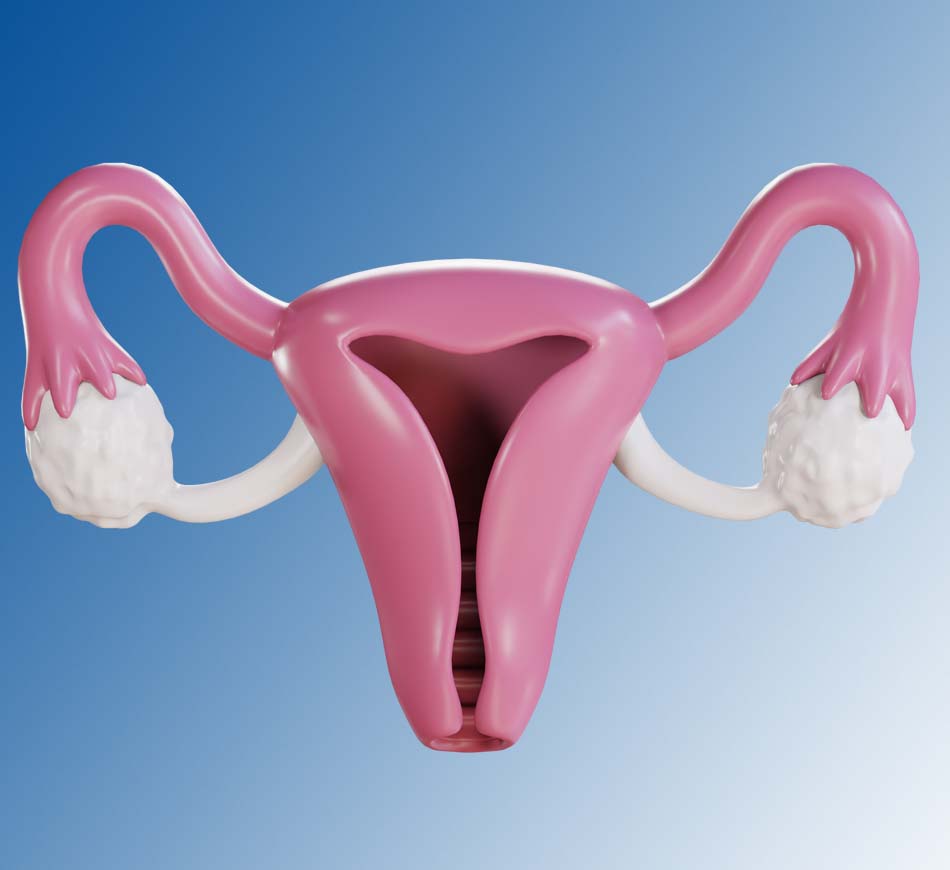
Endometriosis
What is Endometriosis (Chocolate Cyst)?
Endometriosis is defined as a disease related to the hormone estrogen, caused by the presence of cells in the lining of the uterus outside the uterus. It is reported to occur in one in ten women of reproductive age. The disease can also occur in premenstrual girls or in 2 to 5 percent of postmenopausal women. Chocolate cysts are diagnosed between 7 and 12 years after the onset of symptoms.
What are the complaints?
It can occur in many areas, mostly in the lower abdomen, ovaries and tubes, including the bowel, diaphragm, nerves and chest cavity. Although endometriosis is a common and benign disease, cellular changes caused by endometriosis can cause painful menstruation, emergency visits due to menstrual pain that does not respond to painkillers, pain during sexual intercourse, persistent groin pain, pain during defecation or urination, diarrhea-constipation attacks, back leg-waist pain, chronic fatigue, inability to have children, more rarely bloody vomiting and right shoulder pain. While the severity of these symptoms can vary from person to person, they can worsen especially during menstruation.
How is it formed?
Although this is not yet clear, in chocolate cyst disease, cells of the lining of the uterus pass through the tubes and settle on the organs in the abdomen. In most women, these cells can be removed from the body, but in patients with endometriosis this mechanism is thought to be impaired. Apart from this theory, it is thought that cells that have been present since birth also differentiate into chocolate cysts over time. As a result of the cellular differentiation that takes place here, chocolate-colored cysts containing blood products form in the ovaries and hard nodules form in other organs.
After the development of endometriosis, direct involvement of the nerves in this area or stimulation of these nerves by certain secreted substances are held responsible for the development of pain.
How many types are there?
Endometriosis lesions can be categorized as superficial, involving the lining of the abdomen, or deep-seated, involving the bowel, urinary tract, bladder and uterine ligaments. It can also be divided into 4 stages, mild, moderate and severe, depending on the organ involved and the extent of the disease. Endometriosis tissue often appears as cysts with hard, dark brown contents.
Who is more common?
Factors associated with an increased risk of endometriosis include not having given birth, early menstrual age, late menopause, short intermenstrual period, congenital organ defects, family history of endometriosis, tall stature, high consumption of trans unsaturated fats, and living in an industrialized area.
Chocolate cyst (endometrioma) in the ovary – A chocolate cyst or endometrioma is formed when cells of the lining of the uterus are located in the ovary, with a dark brown cyst content. They are often detected on ultrasound examination. It can go both ways. If it is bilateral, it is likely to be associated with advanced endometriosis.
Deep (advanced) endometriosis – In deep (advanced) endometriosis, other pelvic organs such as the lining of the abdomen, the ligaments holding the uterus, intestines, bladder, nerves, urinary tubes, diaphragm, lungs and vagina are often involved.
Examination findings – tenderness on vaginal examination, palpation of nodules, rarely visualization of endometriosis involvement of the cervix or vaginal tissue. The absence of these symptoms does not mean that the disease is not present.
Blood test –There is no laboratory test that can make a definitive diagnosis of endometriosis. Serum cancer antigen (CA) 125 may be elevated in women with endometriosis (i.e. more than 35 units/mL), but the diagnostic role of serum CA 125 is not clear. It is not recommended to ask every patient.
Radiological tests –Vaginal or abdominal ultrasound is usually sufficient to diagnose a chocolatecyst. Apart from this, in experienced hands it is possible to see nodules in the ligaments holding the intestine-bladder-rectum. In some cases, contrast-enhanced magnetic resonance imaging (MRI) of the lower abdomen may also be used in the diagnosis.
The definitive diagnosis of endometriosis is based on suspicion and the response to treatment. The absence of endometriosis on laparoscopic biopsy does not mean that endometriosis is not present. During surgery, foci of endometriosis can be seen in white-pink-brown-black shapes.
Treatment Options
Painkillers
It can be preferred especially in patients who complain of pain during menstruation. In the treatment of endometriosis, it can only be used to suppress complaints, it has no place in definitive treatment.
Medicines containing progesterone
It can be used in patients with pain complaints at the forefront, can partially reduce the pain, has no place in definitive treatment. Intrauterine spirals that release progesterone can be used in patients with uterine involvement and menstrual irregularities. It should be kept in mind that there may be intermenstrual bleeding in the form of spotting during hormone treatments and menstrual bleeding may stop after a while.
Drugs containing estrogen-progesterone (birth control pills)
Chocolate cyst patients with menstrual irregularities or pain complaints during progesterone treatment may be advised to use birth control pills directly without interruption. These pills can also be used as birth control.
GnRH Derivatives (temporary menopause injections)
These drugs suppress estrogen hormone levels, creating a temporary menopausal state in patients. This condition disappears after the medication is stopped. It is not recommended for use over 6 months due to the risk of bone resorption in long-term use.
Laparoscopy
Laparoscopy 3-4 small incisions made in the abdominal skin It is a method of visualizing the abdominal cavity using surgical instruments and removing the foci of chocolate cysts when necessary. In particular, continuation of pelvic pain that does not respond to drug treatment and disrupts the quality of daily life, large-sized ovarian cysts with suspicious appearance, involvement of the intestine and bladder, involvement of the urinary tract and risk of kidney loss, lung involvement, nerve involvement, endometriosis nodules found in the incision sites after previous surgeries require surgical treatment.
The success of laparoscopic treatment depends on the size of the mass, the involvement of both ovaries and uterus, the completeness of the surgery and the experience of the surgeon.
The stage of endometriosis is not associated with the occurrence or severity of pain symptoms
Chocolate cyst and ovarian reserve
There are about 400,000 eggs in adolescent girls. Some eggs from this egg pool are selected and discarded each month. As you get older, the egg pool starts to diminish. In addition, diseases such as chocolate cysts accelerate the decline of this reserve. There is also evidence that it impairs the quality of existing eggs. For this purpose, patients with previous ovarian surgery, advanced age or bilateral chocolate cysts are more likely to have low ovarian reserve. The 3rd day of menstruation to determine egg reserve An FSH test on the day, an ultrasound egg count or an AMH test in the blood are used.
Chocolate cyst and childbearing
Infertility rates in women with chocolate cysts are approximately 30-40%. Many factors are responsible for this. These factors include adhesions in the abdomen or in the tubes, decreased egg reserve, decreased egg quality, the fluids released from the cyst disrupting the environment that should be suitable for the baby to settle, preventing the egg from combining with sperm, and preventing the baby from attaching to the uterus. Especially patients with bilateral cysts, who have had ovarian surgery before, who do not have active pain complaints, who are older than 35 years of age, and who have low ovarian reserve tests should definitely consider egg freezing or embryo freezing if married before surgery if they want to have children.
Pregnancy course in the presence of a chocolate cyst
During pregnancy Endometriosis lesions may sometimes disappear in response to the changing hormonal environment. However, this does not completely suppress the lesions. In the event of pregnancy with a chocolate cyst, miscarriages, pregnancy poisoning, premature birth, disorders in the adhesion of the placenta can be seen, although rarely.
Chocolate cyst and Cancer
Chocolate cysts may rarely be associated with cancers, but the overall risk appears to be low. According to a study, this risk appears to be 2.56% in the general population, especially before the age of 40, while this risk is lower (1%) in patients over the age of 40, this risk may be slightly higher. The presence of breast, ovarian, uterine and bowel cancer in the mother and siblings and the appearance of a mass with cancer characteristics are particularly important in the development of cancer.

